Self care assistive products included in TAP
TAP modules include some of the most commonly used self care assistive products including:
- Shower chairs
- Toilet chairs
- Absorbent products
- Catheters
- Dressing aids
- Eating and drinking aids.
Read on for a brief introduction to these products.
Shower chairs
Shower chairs are placed in a shower or bathing area for a person to sit down while washing themselves.
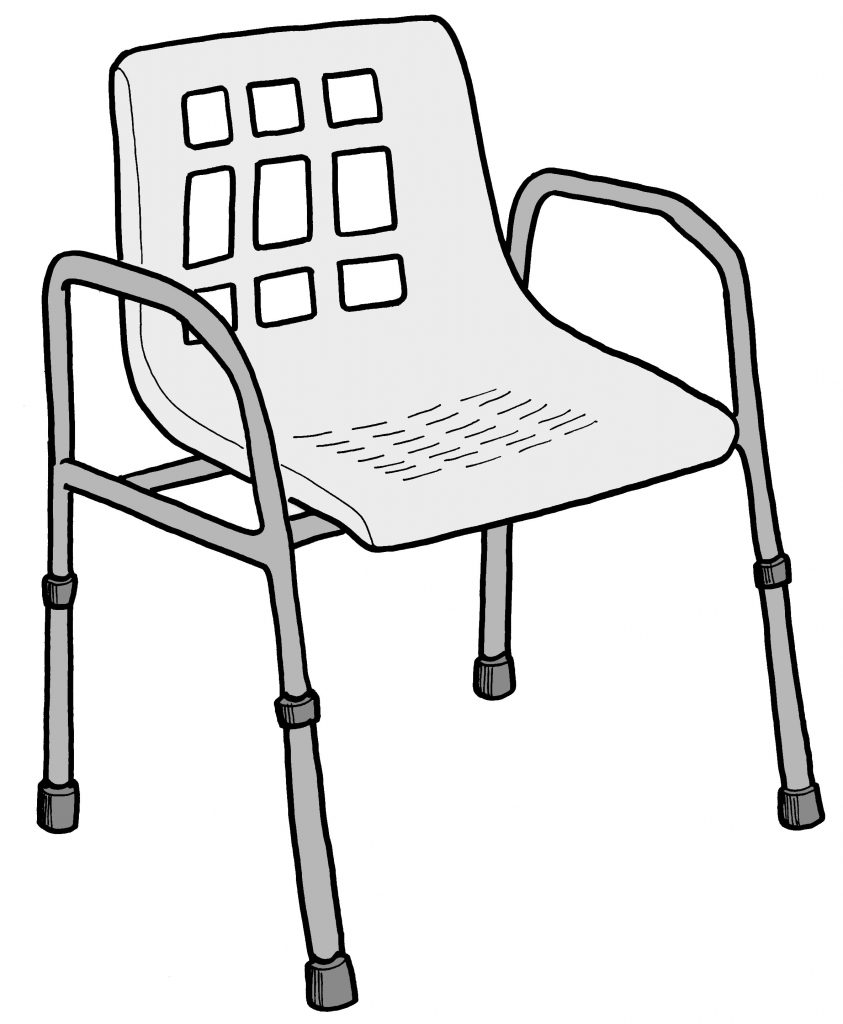
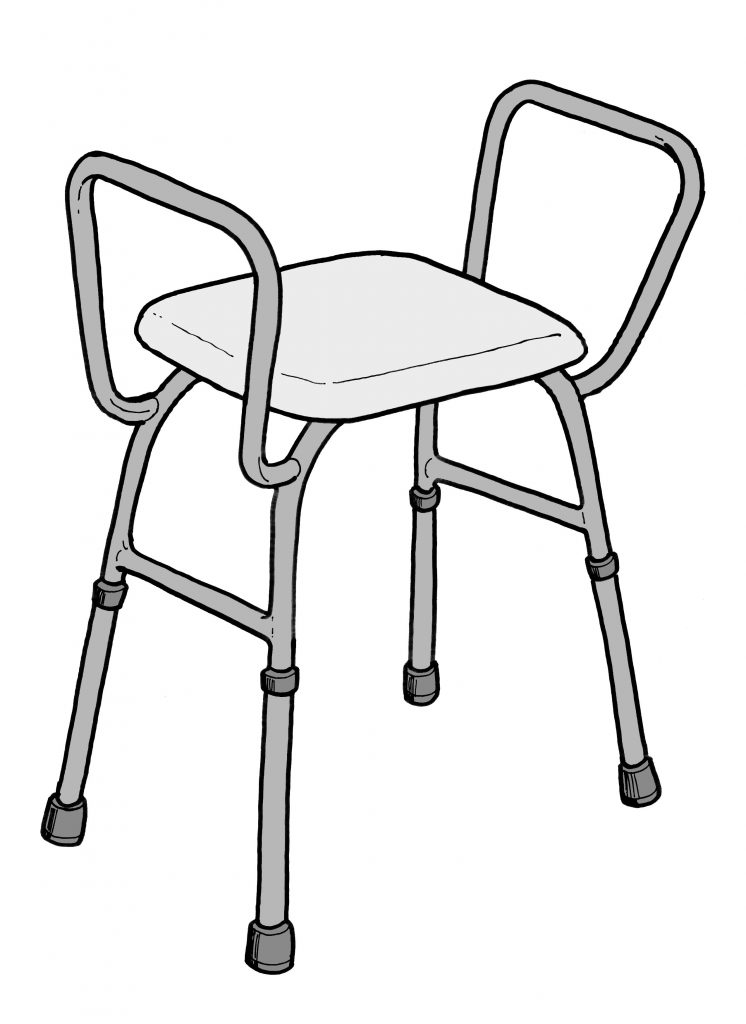
Shower chairs are useful for people who cannot stand and/or balance safely while washing themselves.
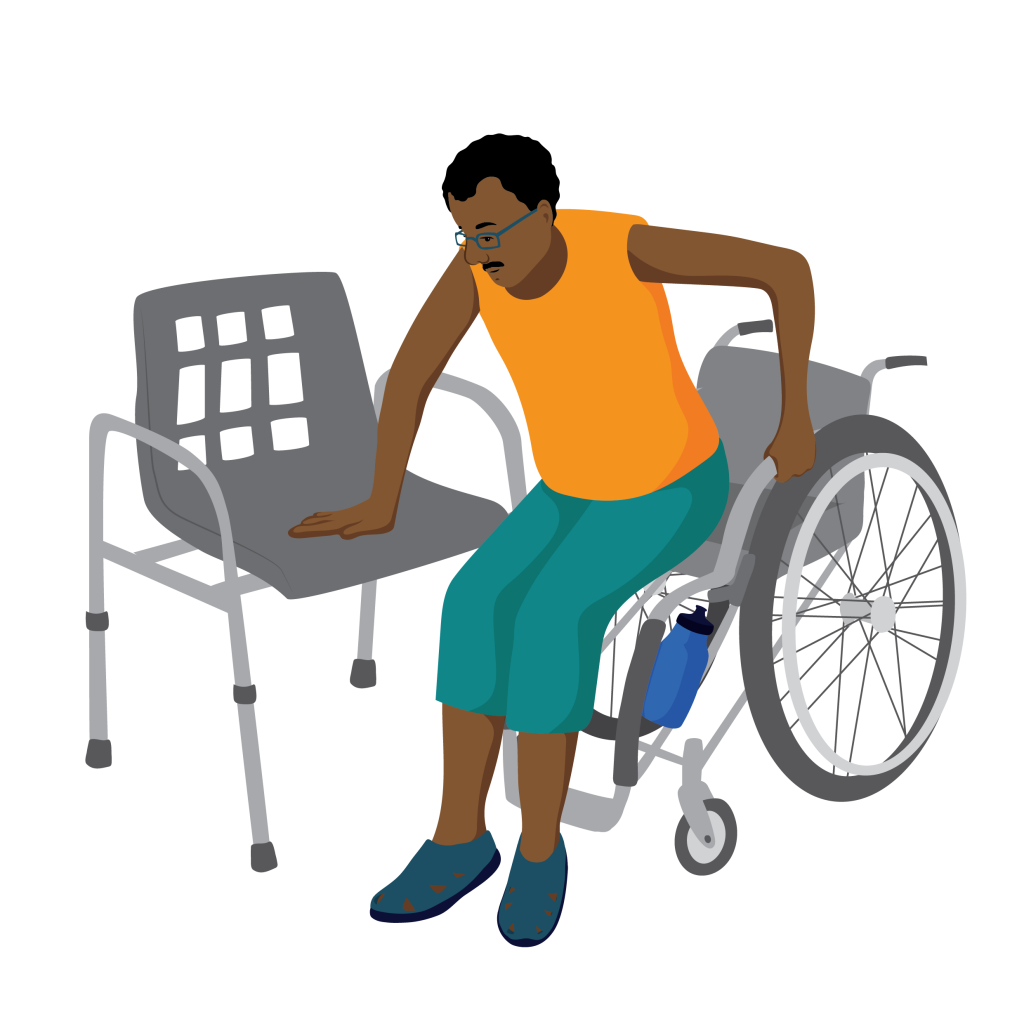
Remember Peter?
He has a spinal cord injury and is paralysed below his waist. He uses a wheelchair to move about. Peter has a shower chair in his bathroom. He wheels himself into the bathroom and transfers to the shower chair. He then pushes the wheelchair out of the way of the water, and showers himself.
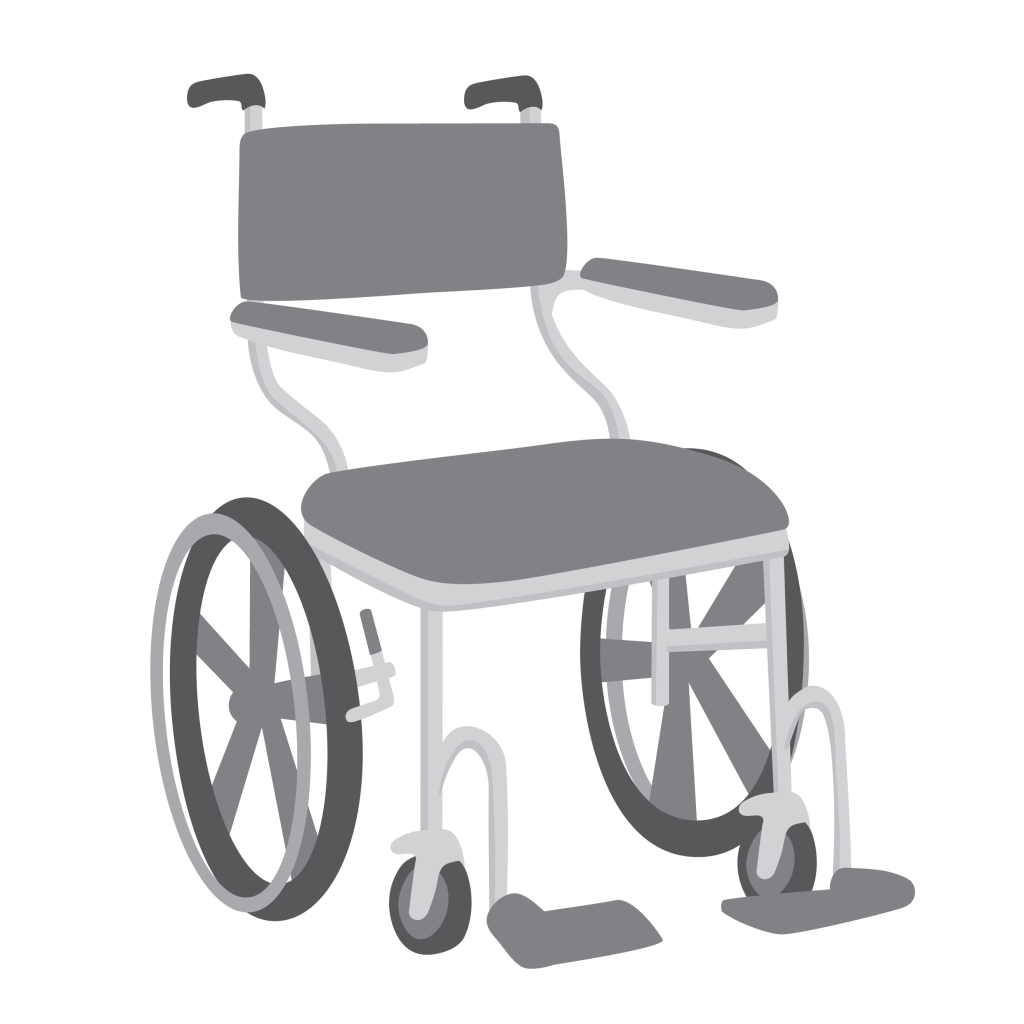
Shower chairs with castor wheels are useful for people who need to sit when washing and also find it hard to get to or from the shower or bathing area.

Remember Ronin?
While his broken leg and arm heal from his accident, he is using a shower chair with wheels. The chair is placed next to his bed, and his parents help him to transfer (move) onto it. He is then pushed into the shower area on the chair, where he is assisted to shower.
For more information about shower chairs and how to provide them, complete the TAP shower and toilet chairs module.
Toilet chairs
Toilet chairs have a cut away seat, armrests, and a removable bucket. Some also have a backrest.
They can be used either:
- Over a toilet (without the removable bucket) or separately from a toilet
- In any private place (with the removable bucket).
Toilet chairs offer more support for sitting down, sitting and standing up than a regular toilet.
Some toilet chairs have wheels.
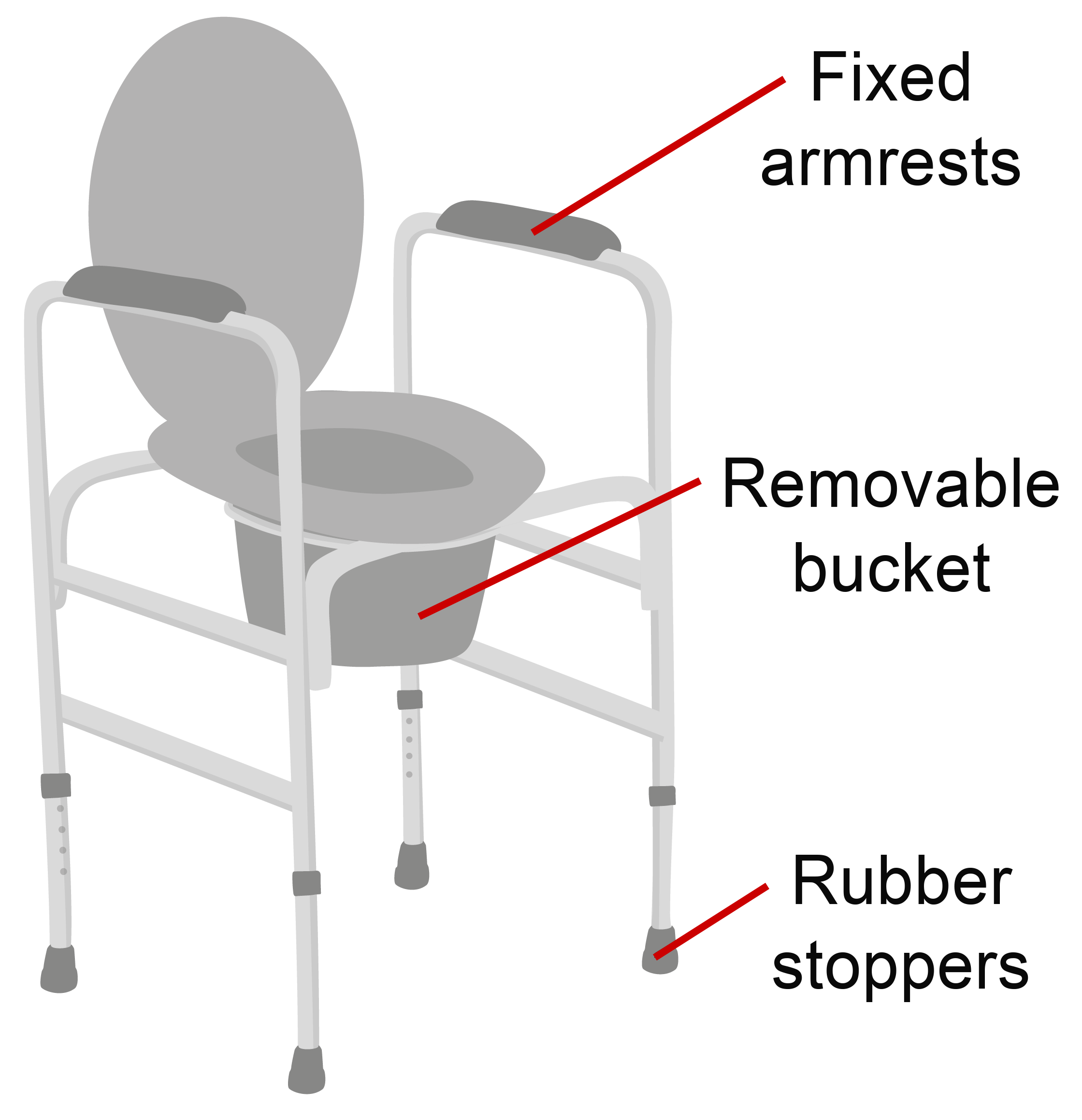
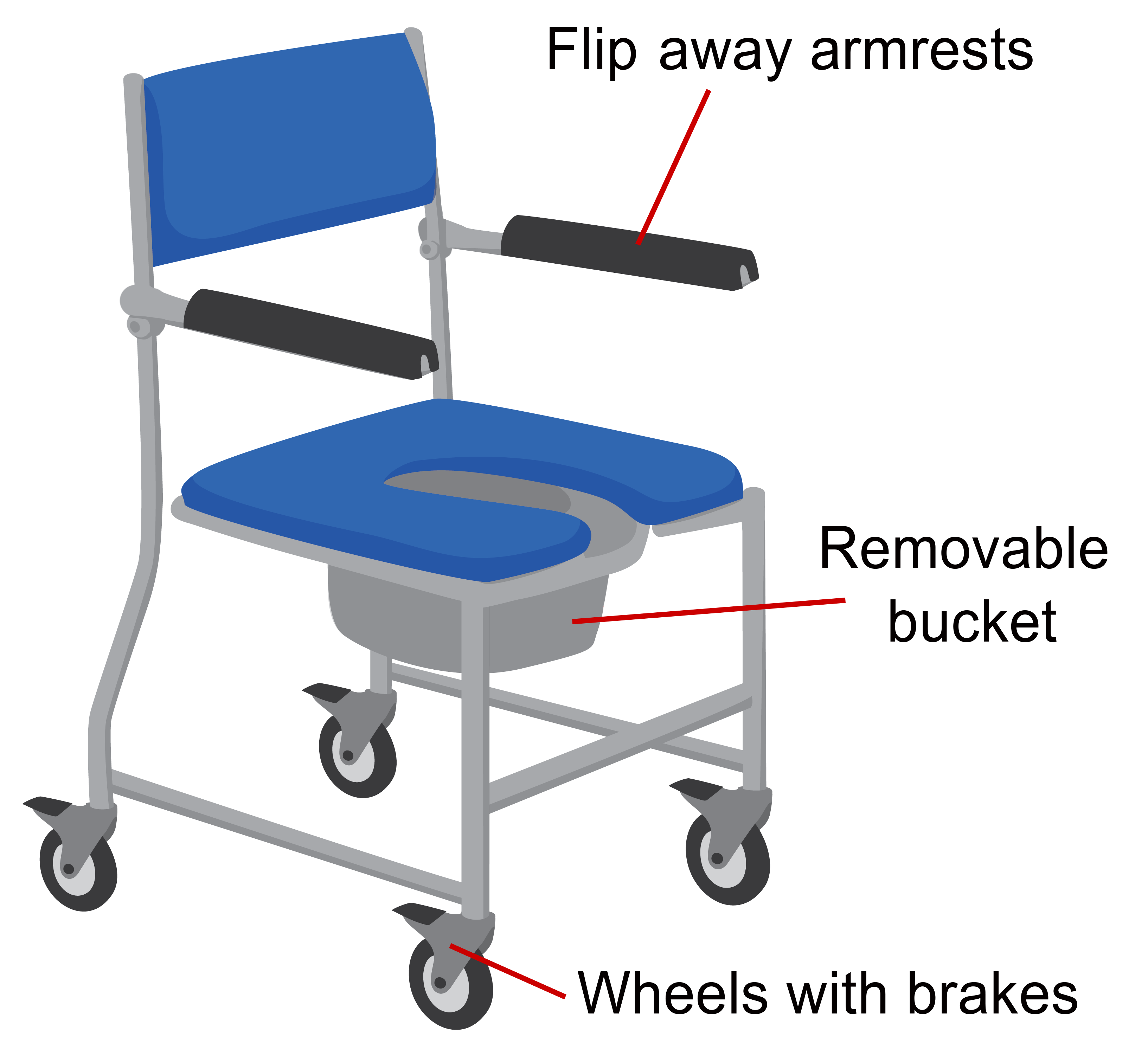
Toilet chairs can be useful for people who:
- Find it difficult to get to or from the toilet and/or
- Find it hard to get on and off the toilet
- Need help to sit comfortably whilst learning or relearning toileting skills (toilet training).
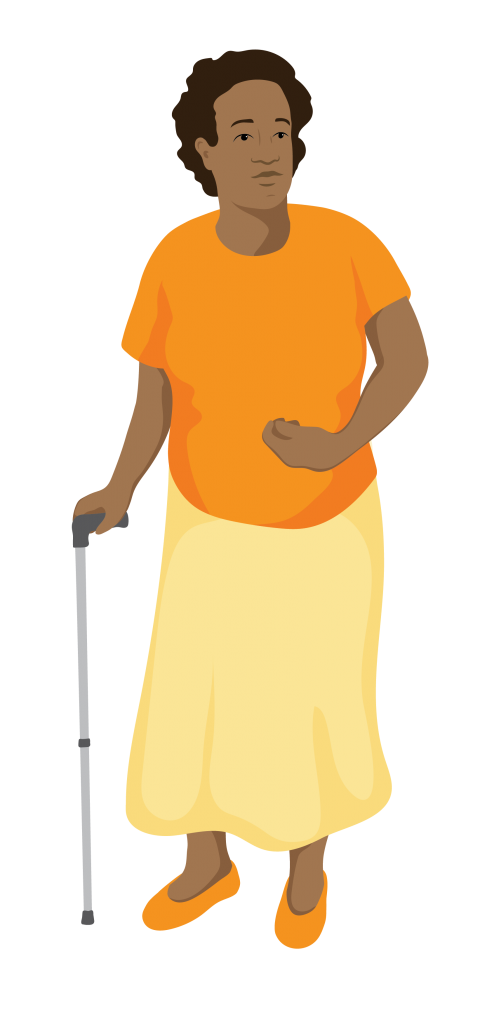
Remember Aida?
After her stroke, Aida found getting to the toilet, and sitting down and standing up harder.
She now uses a toilet chair with a removable bucket.
During the day the bucket is removed and the chair is placed over the toilet.
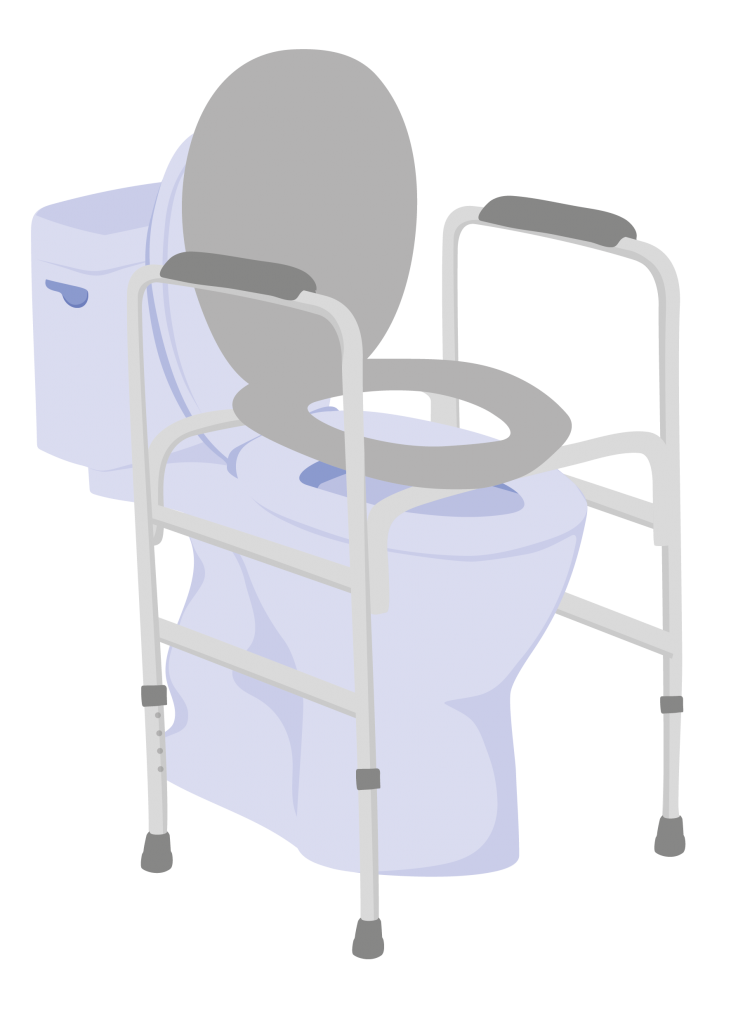
Getting on and off the toilet is then easier for Aida, as the toilet chair is higher and has armrests to hold onto. Her daughter helps her to walk to and from the toilet.
At night the toilet chair is placed next to Aida’s bed with the bucket in place.
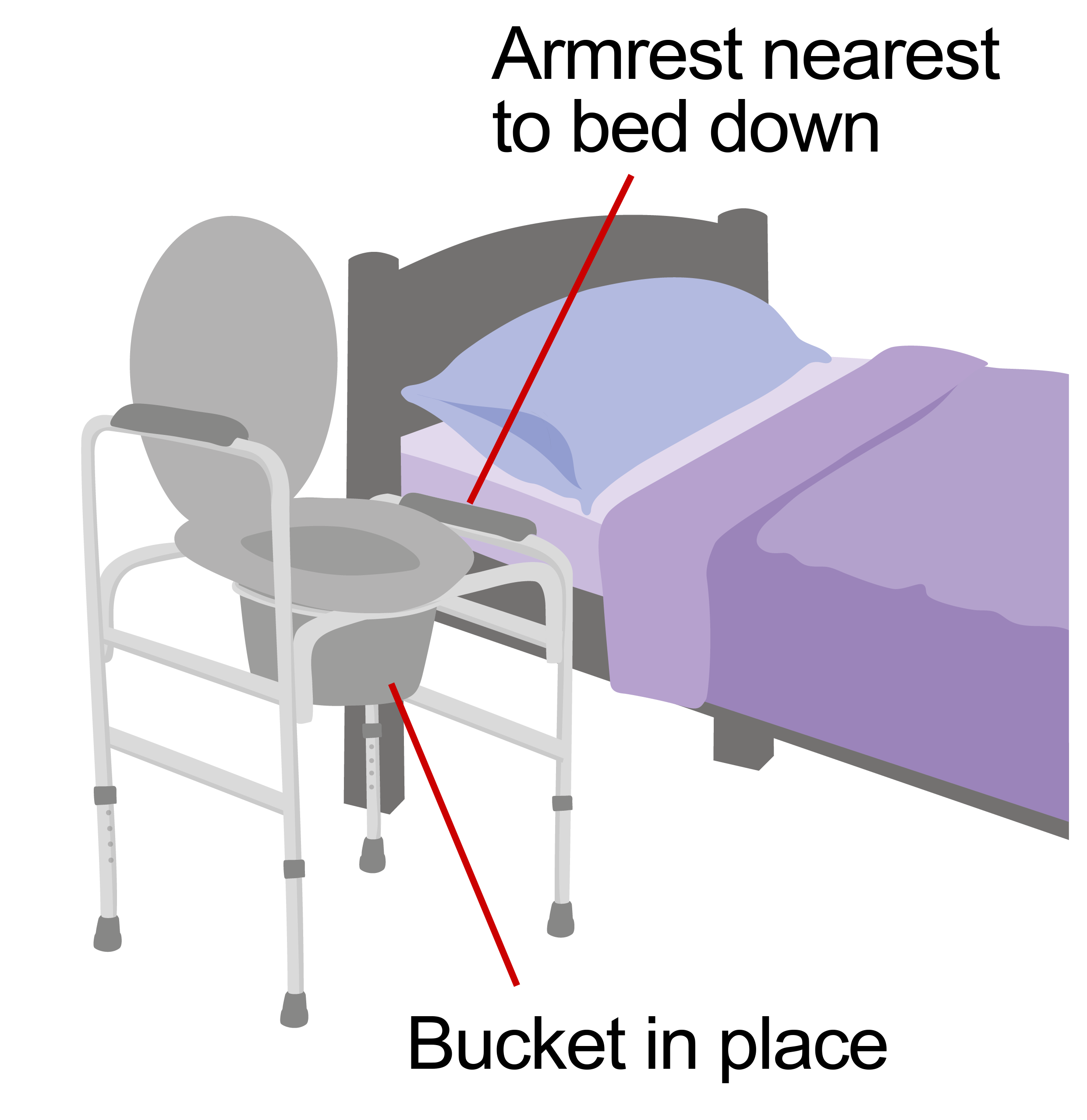
She can transfer onto the toilet chair herself, without needing to wake her daughter. The bucket is emptied in the morning.
For more information about toilet chairs and how to provide them, complete the TAP shower and toilet chairs module.
Absorbent products
Absorbent products included in TAP are those that are worn by the person. These products:
- Come in different shapes and sizes
- Can be used by boys, girls, men and women
- Include products suitable for light, moderate or heavy leakage and
- Can be either washed and re-used or used once and thrown away (single use).
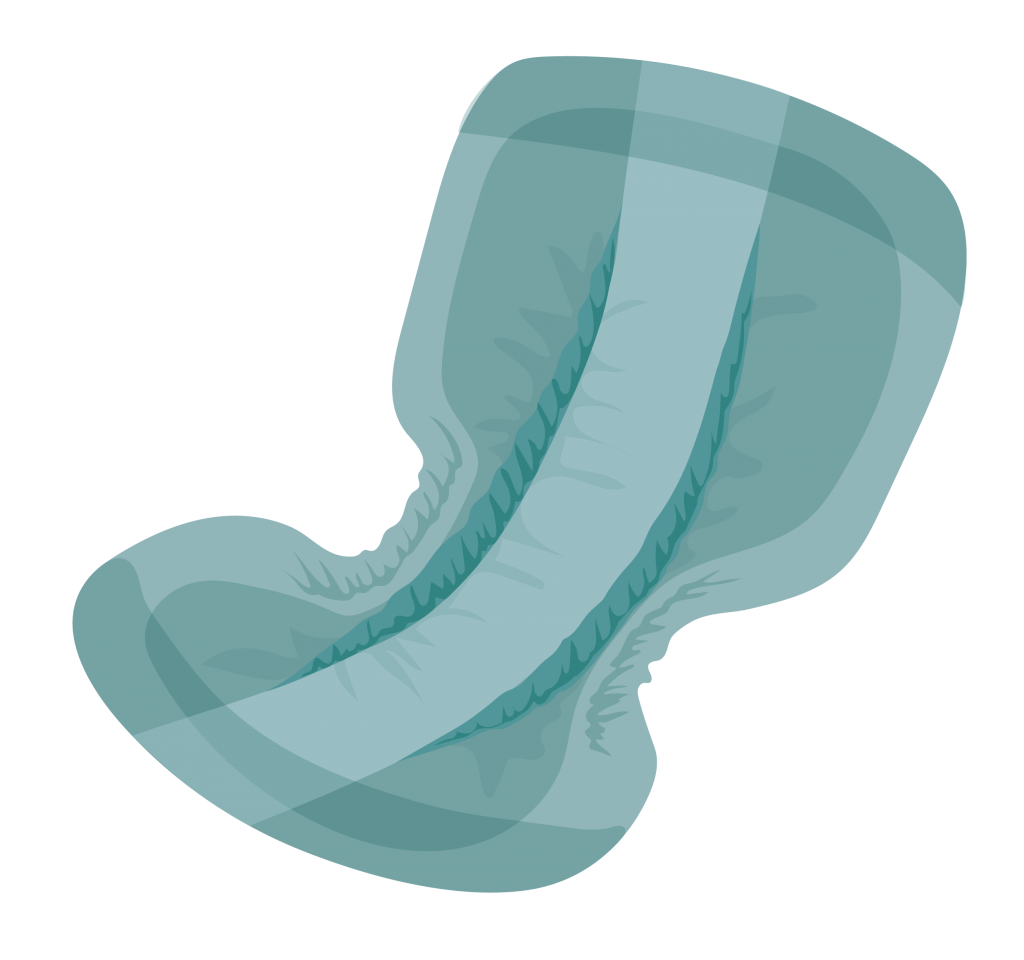

Absorbent products can be useful for people who experience incontinence. They contain leaks of urine and/or faeces and help protect a person’s skin and clothing; allowing them to continue with their day to day lives.

Remember Aleisha?
Aleisha has cerebral palsy and finds it hard to coordinate and control her movements. She can usually feel when she needs to go to the toilet, and her mother assists her to get to and use the toilet.
However, sometimes she can’t control her bladder and bowel. When Aleisha is at school she wears absorbent products that are easy to pull on and off. These help to manage any bladder or bowel leakage.
For more information about absorbent products and how to provide them, complete the TAP absorbent products module.
Catheters
A catheter is a flexible tube that drains urine from the bladder.
Catheters can be useful for people who have difficulty emptying their bladder.
There are two main types of catheters:
- Intermittent (also called nelaton catheters)
- Indwelling (also called foley catheters)
Intermittent (nelaton) catheters
Nelaton catheters are inserted into the bladder to drain urine and are then removed.
This is done throughout the day, when the person needs to empty their bladder.
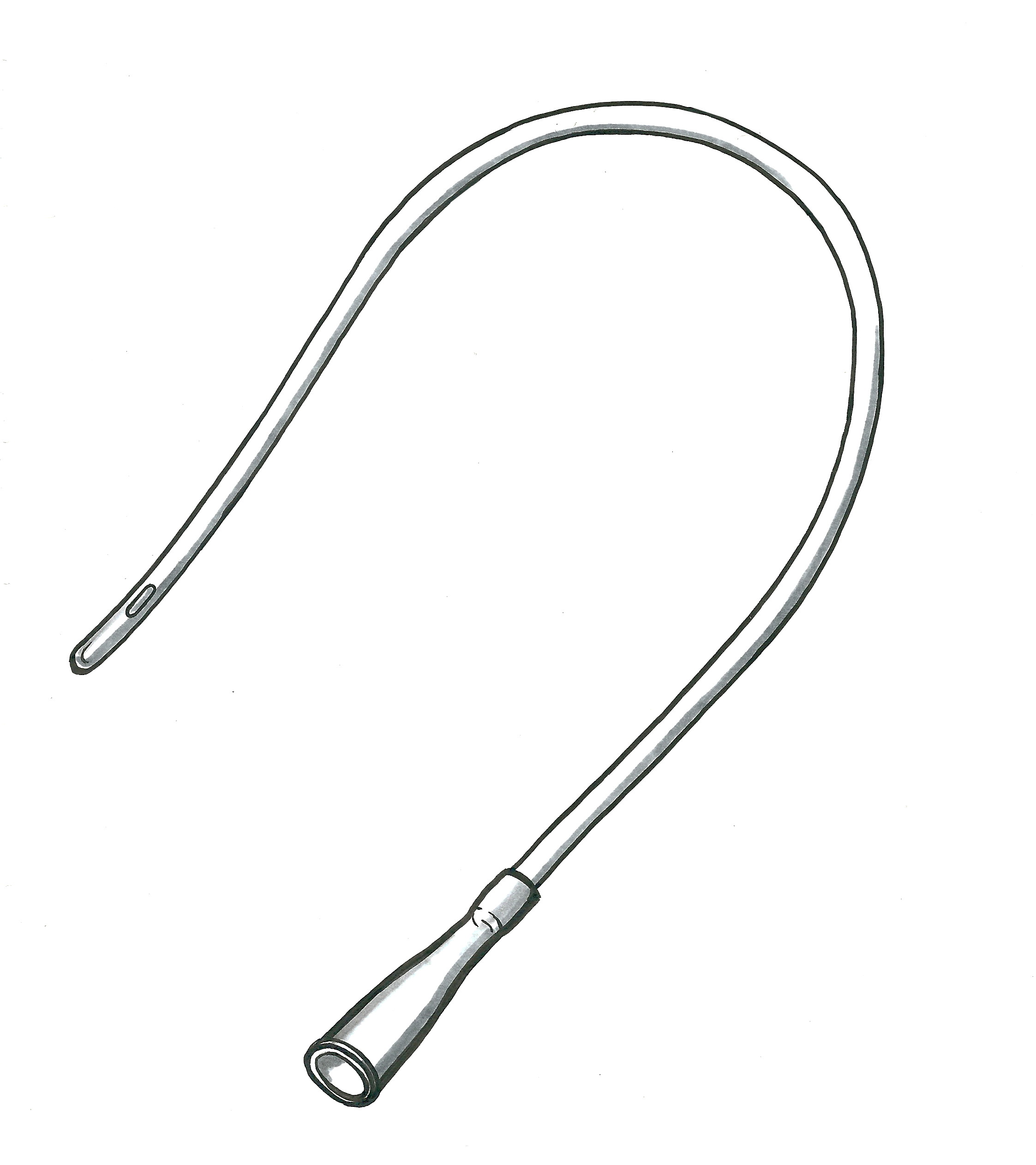
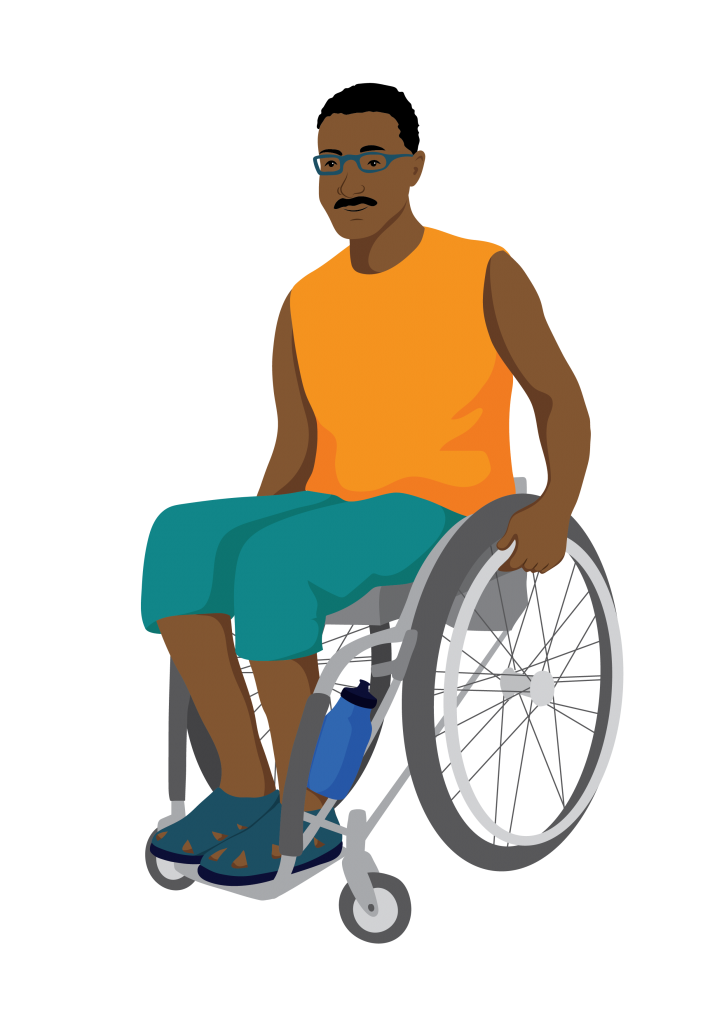
To empty his bladder, Peter uses an intermittent catheter. At regular times each day, Peter uses the catheter to drain urine from his bladder into the toilet.
Indwelling (foley) catheters
They are inserted into the bladder and remain in place for up to twelve weeks. The catheter drains urine into a collection bag that is emptied regularly.
Indwelling catheters can also be used to help people who have urinary incontinence if other products that contain urine are not suitable.

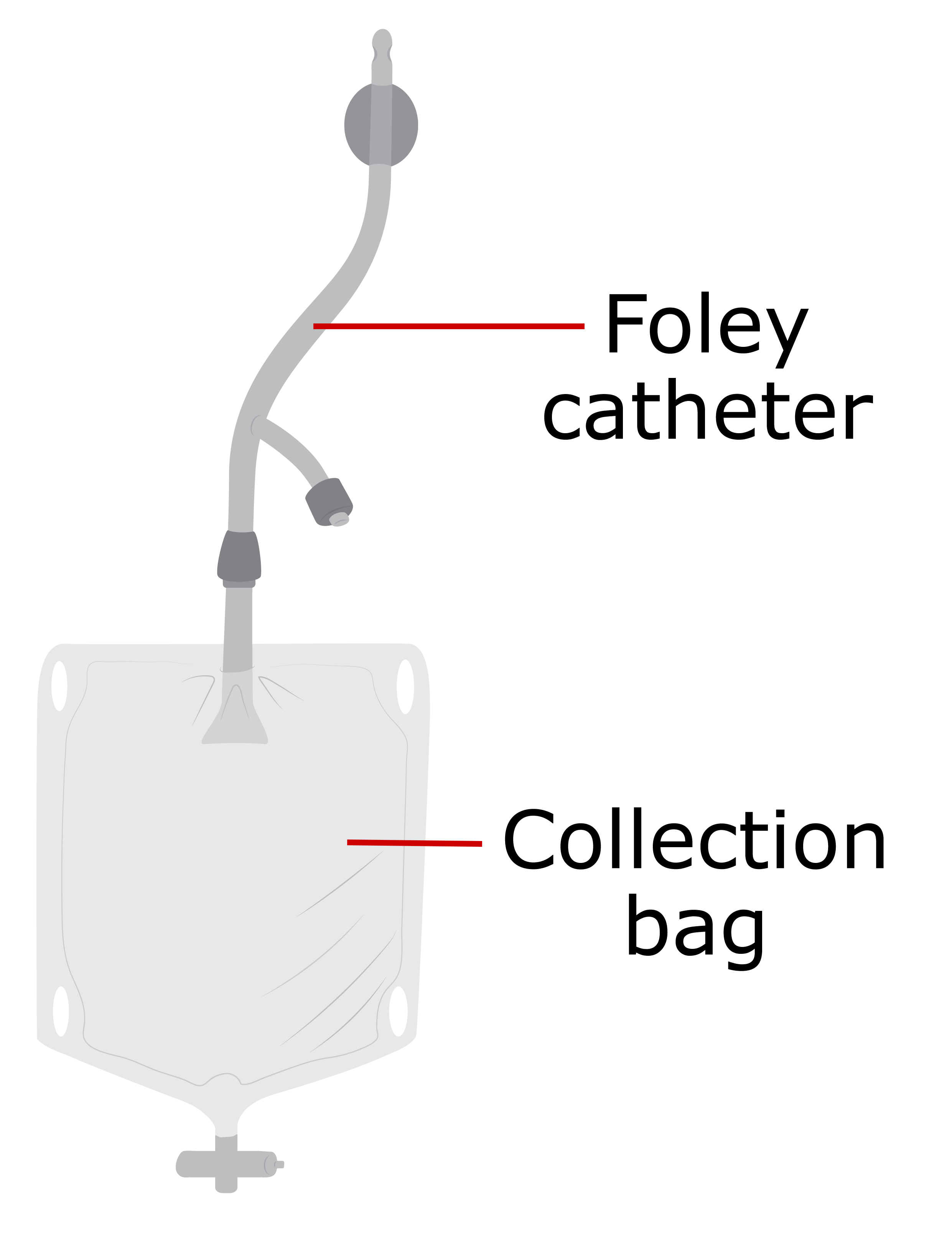
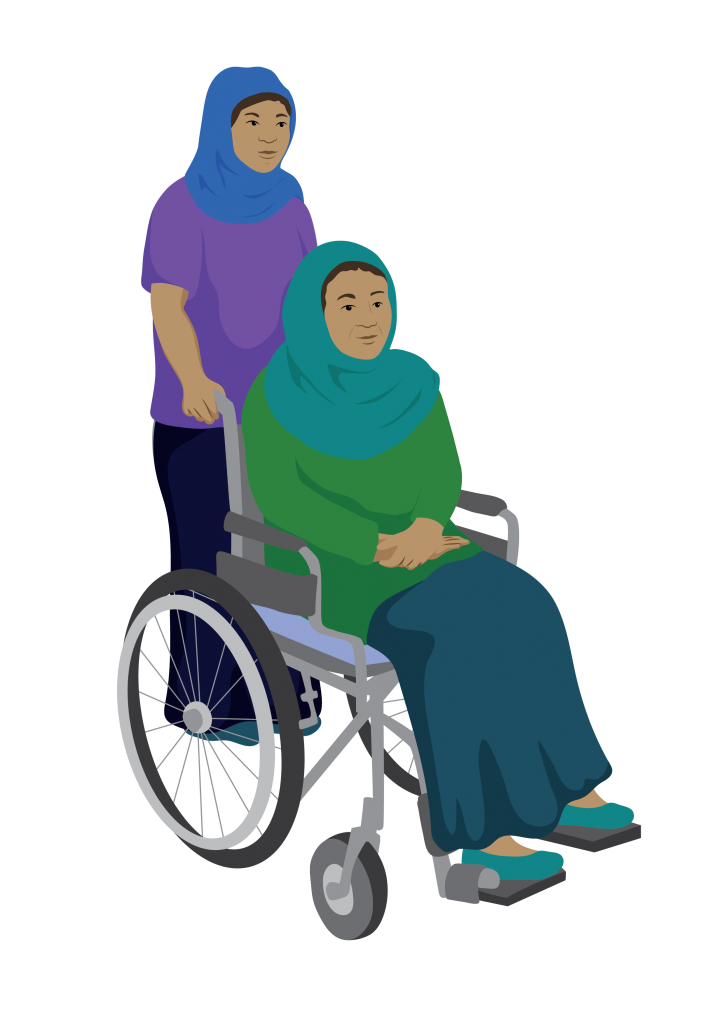
Meet Maria
Maria has multiple sclerosis, which is a condition that affects the nerves in the brain and spinal cord. She uses a wheelchair to move around, and has limited use of her hands. Maria has a caregiver to assist her with self care.
Maria needs a catheter to help empty her bladder, and has chosen to use an indwelling catheter.
Sheath (uridome)
Sheaths are another option (to absorbent products) that males may use to contain leaks of urine. They attach to the penis and are connected to a short flexible tube at the end. The tube is then attached to a urine collection bag.
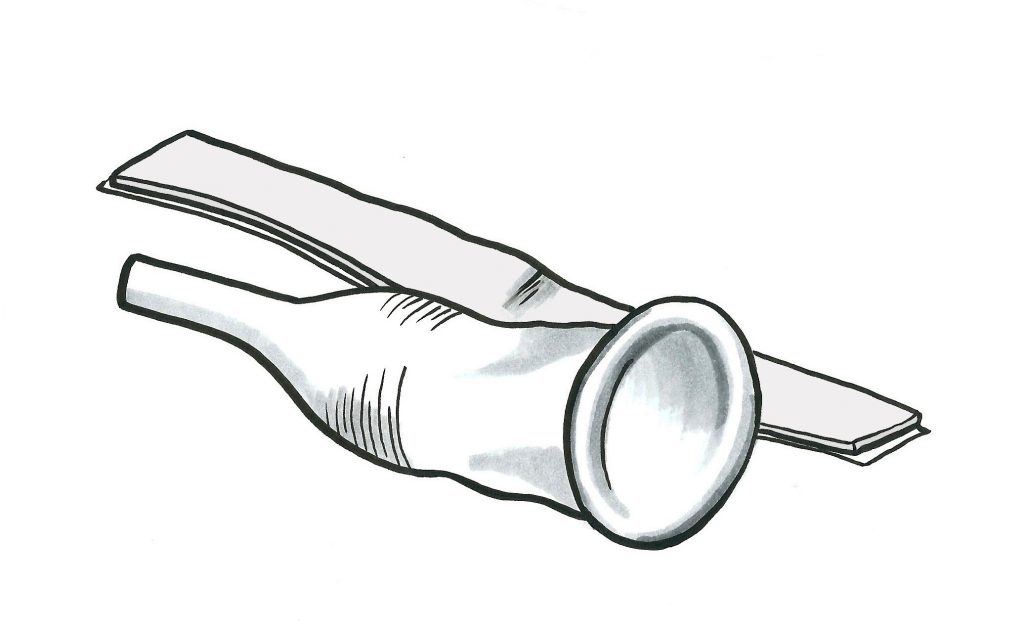

For more information about the different types of catheters and how to provide them, complete the TAP catheters module.
Self care assistive products to help with dressing
Dressing stick
A dressing stick has a ‘c’ shaped hook at one end, and an ‘s’ shaped hook at the other.
It is used to help pull clothes on or off.
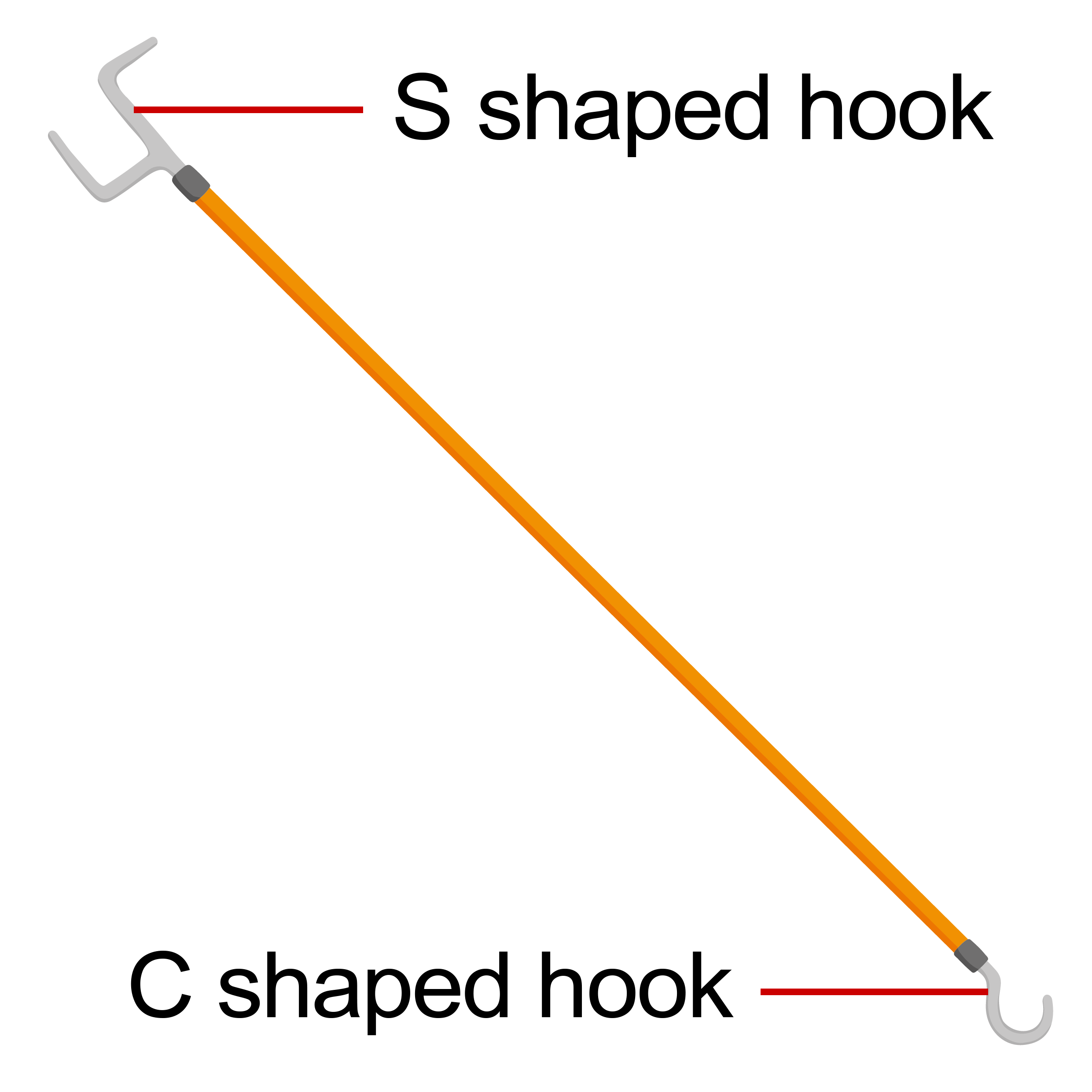
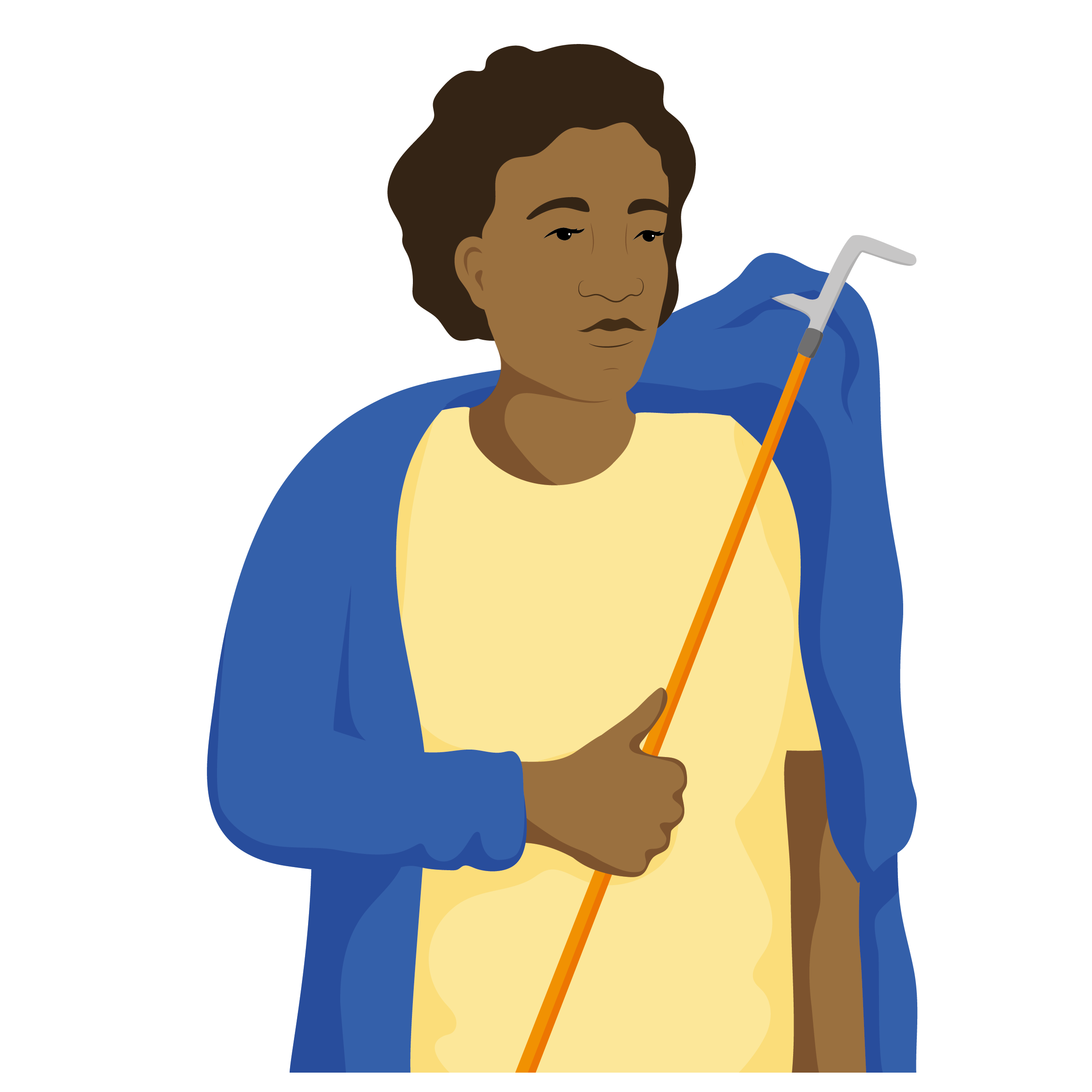
Dressing sticks can be useful for people who cannot bend forward easily, or have limited movement in one or both arms.
Long-handled shoe horn
This is a shoe horn with an extra-long handle, to help a person to get their foot into a shoe.
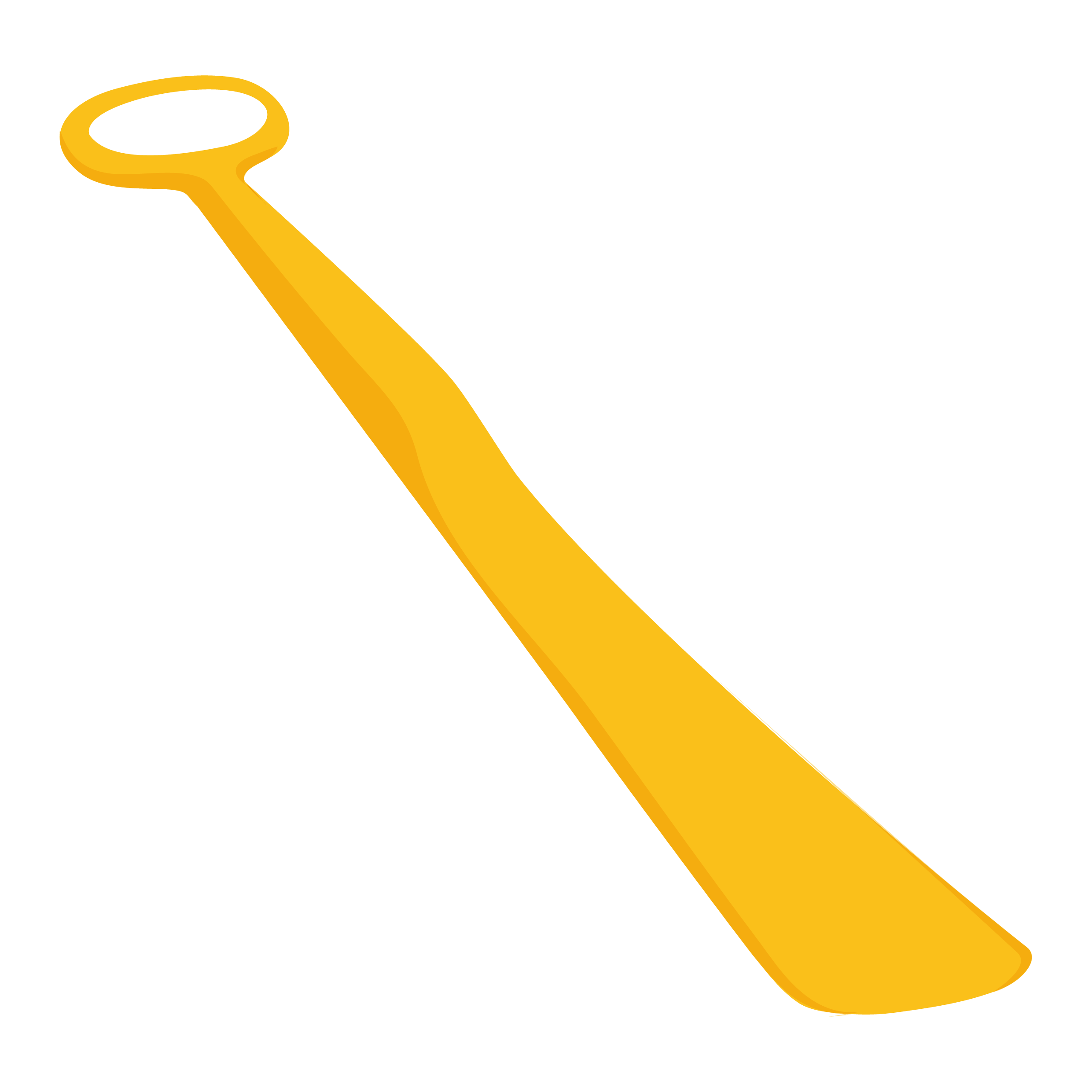
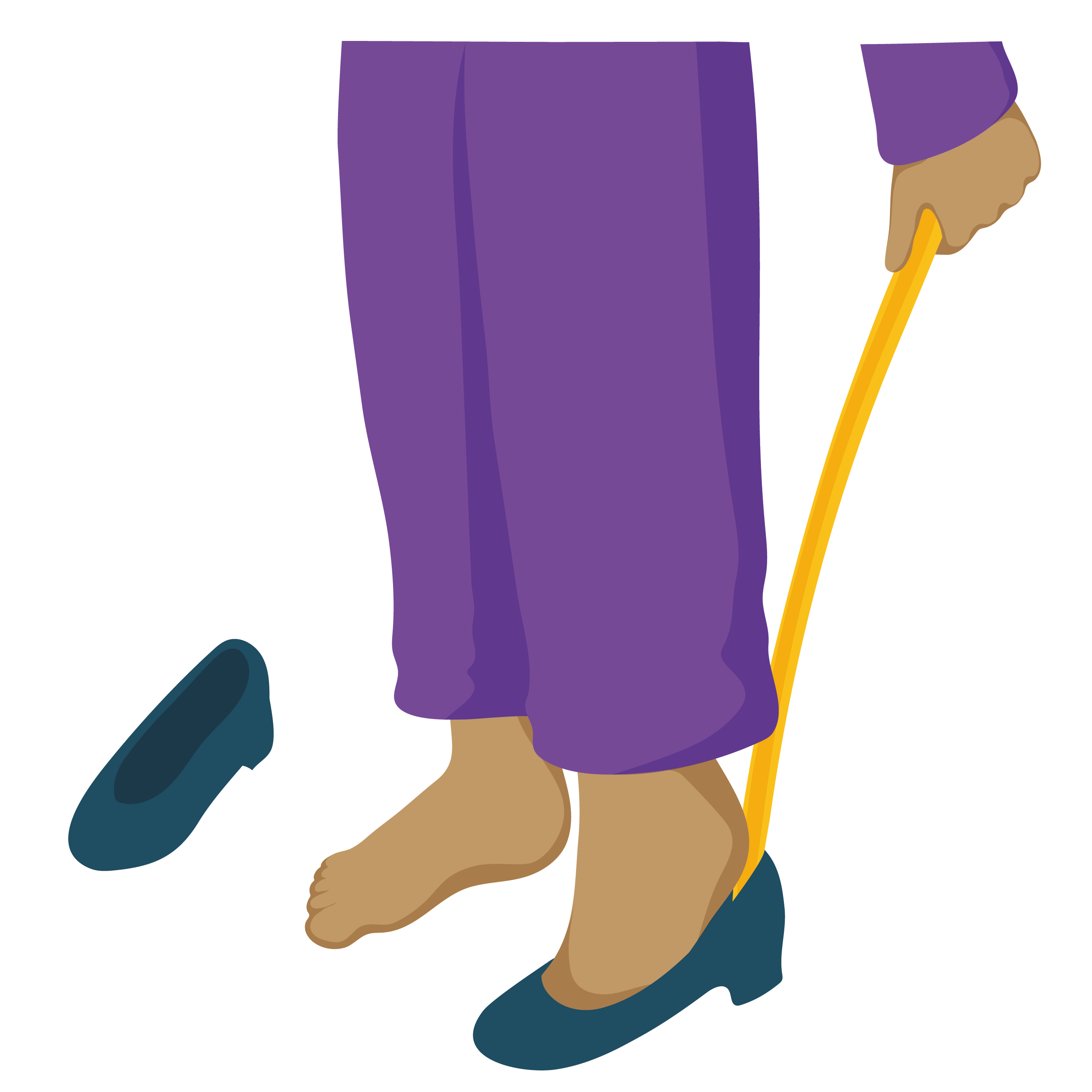
This can be useful for people who cannot lean forward easily, or for those who have limited arm or leg movements.
Sock aid
A sock aid is a piece of flexible plastic with two cords attached to the ends. A sock or stocking is looped over the end of the plastic, the person then puts their foot in the sock and uses the device to pull the sock up the leg using the two cords.


Sock aids can be useful for people who have difficulty pulling socks or stockings on if they cannot lean forward easily and/or have limited arm movement.
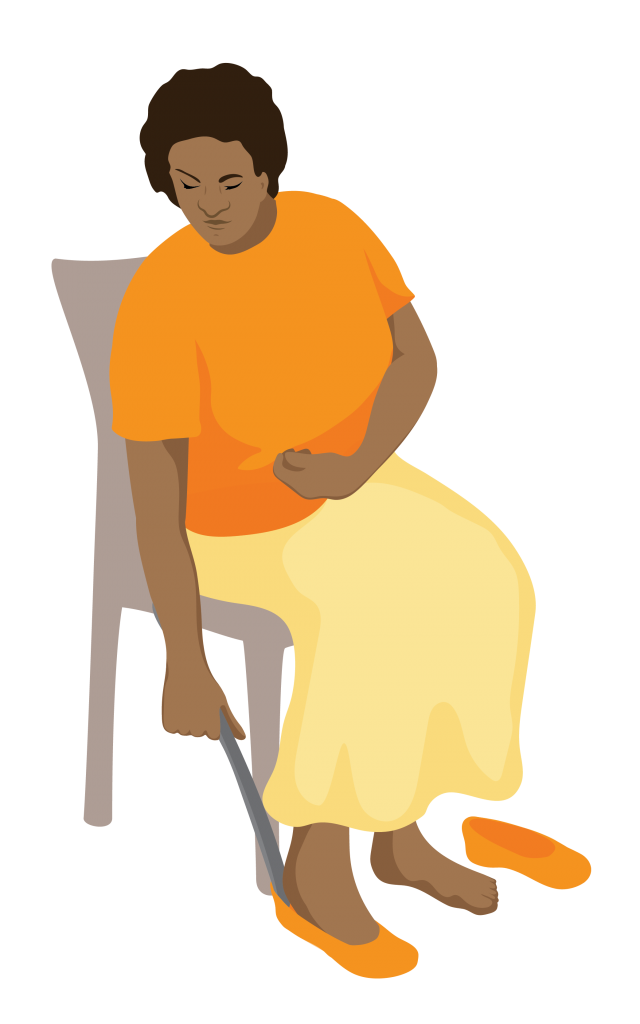
Remember Aida?
Aida has found it difficult to dress herself since her stroke. However, she has started using a dressing stick, a sock aid and a long handled shoe horn. These products have meant that she can now get dressed independently.
Button hook and zip puller
A button hook and zip puller has a ‘c’ shaped hook at one end to pull zippers, and a diamond shaped hook at the other end to pull buttons through button holes.
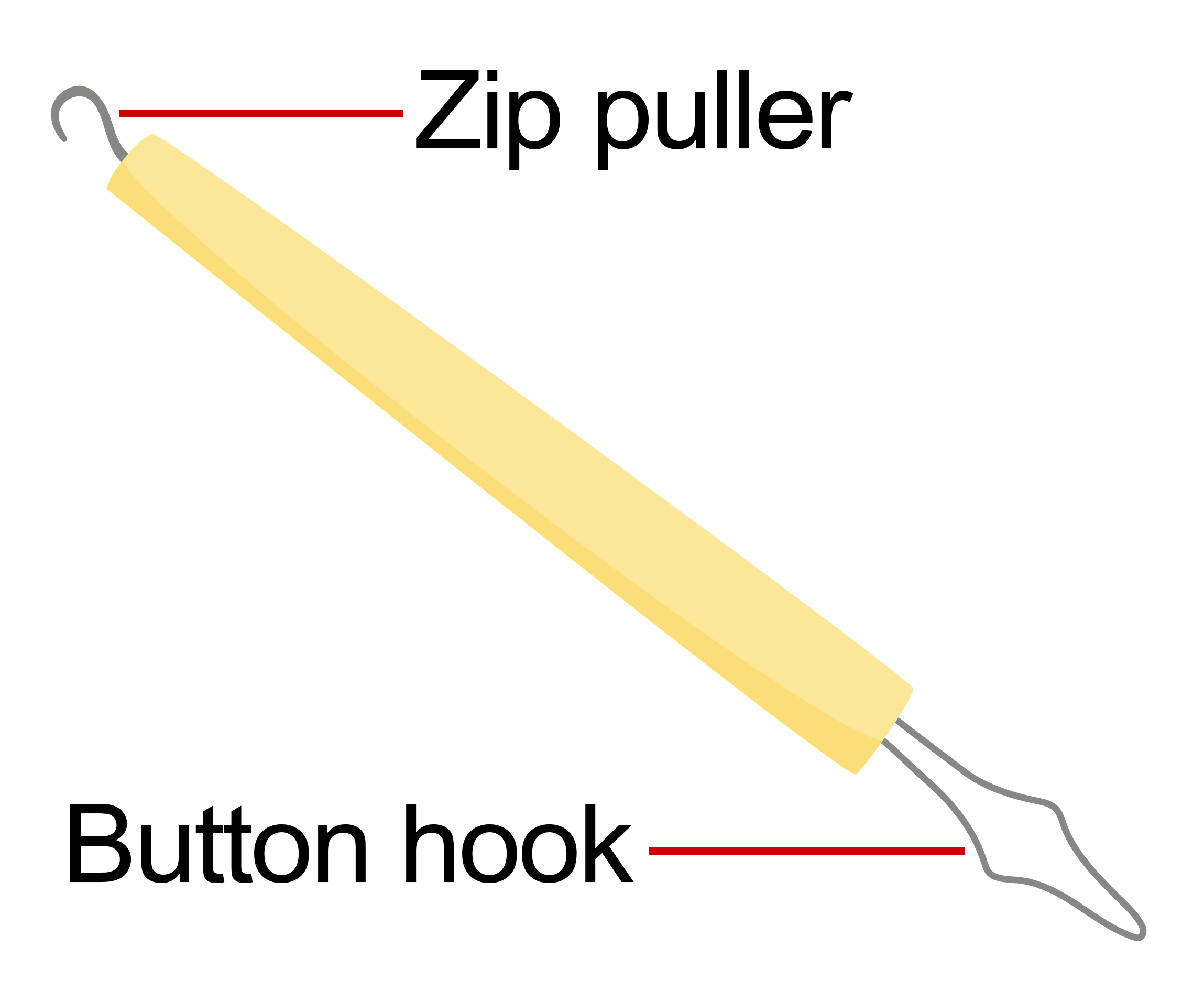
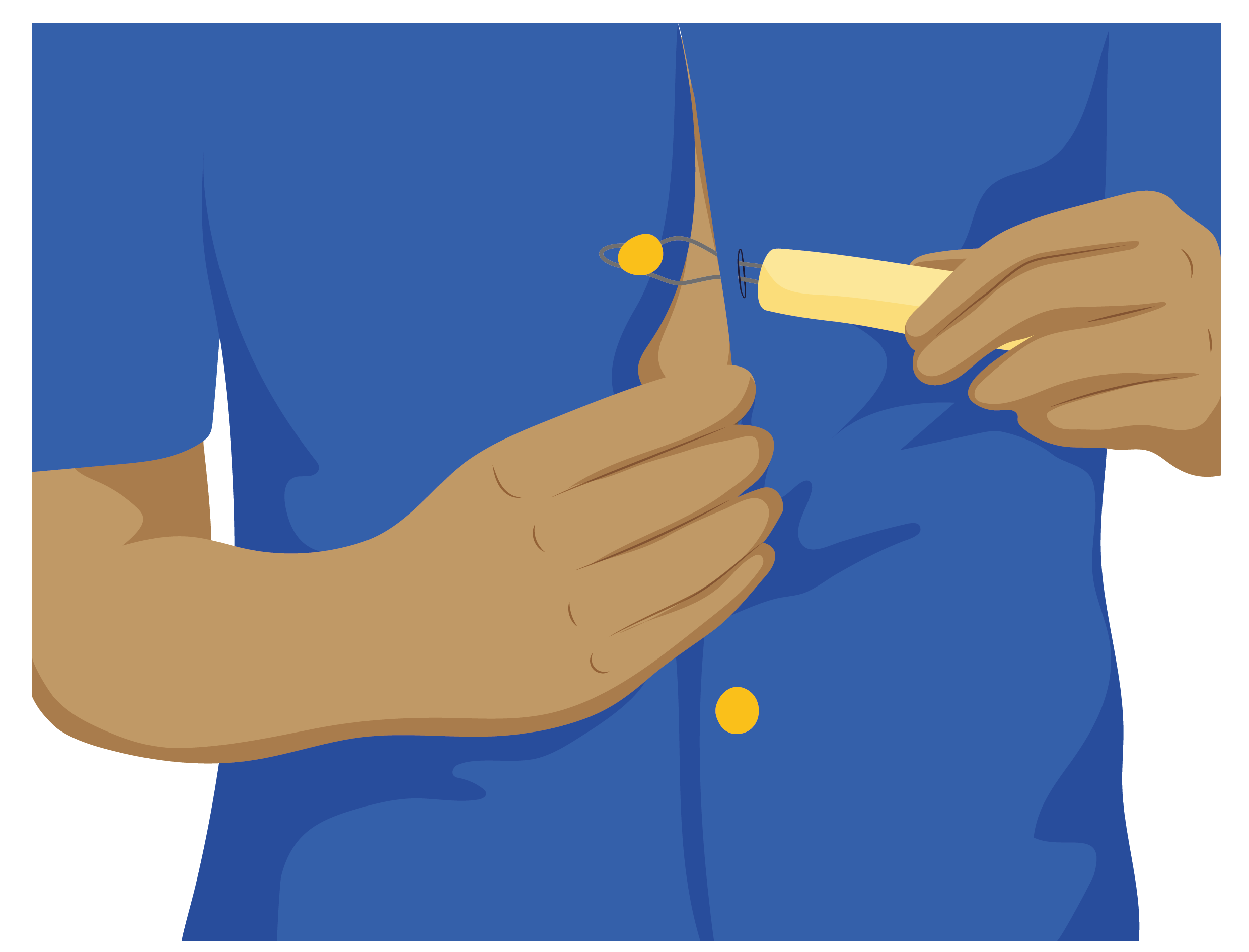
They can be useful for people who have difficulty with small hand movements.
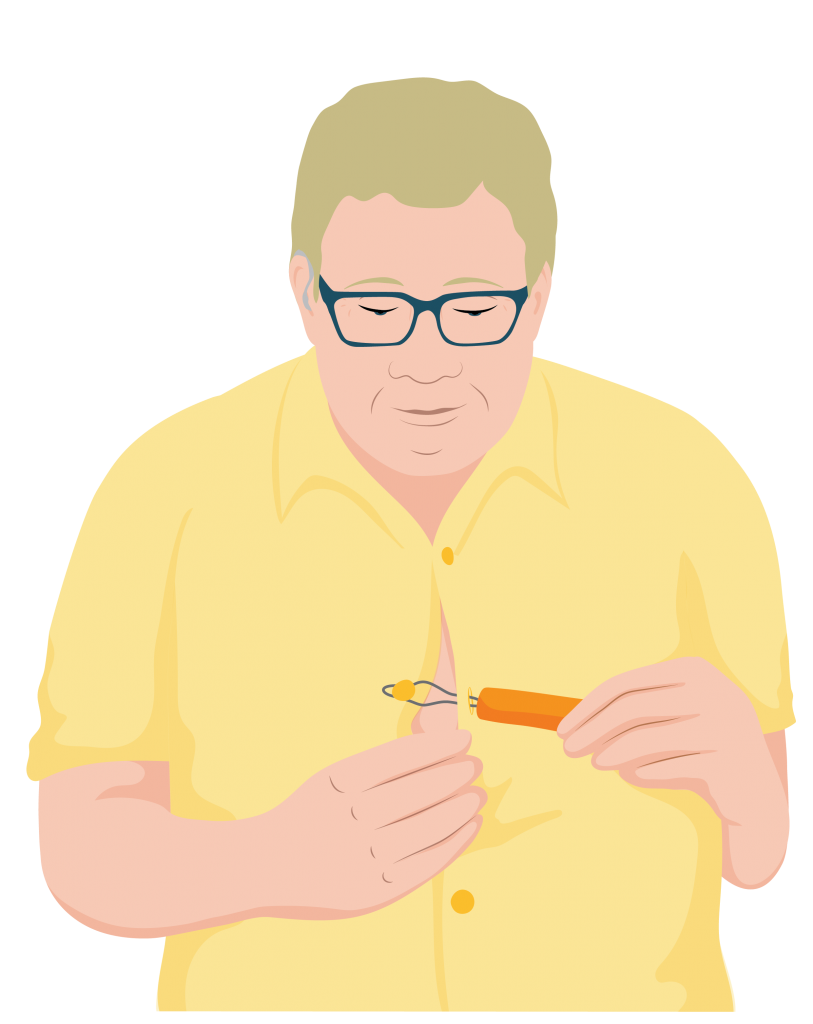
Remember Samuel?
Samuel finds it difficult to manage fine tasks such as doing up buttons and tying shoe laces. He uses a button hook and zip puller to make getting dressed easier.
He also uses shoes that have Velcro rather than laces which are easier for him to manage.
Self care assistive products to help with eating and drinking
Modified cutlery
Eating utensils such as knives, forks, spoons and chopsticks can be modified to be easier to hold.
Handles that are thicker may be easier to hold for people who have limited hand movement and strength.

A soft or firm loop can be added that holds the cutlery to the person’s hand. This is useful for people who cannot hold the utensil but can move and control their arm.
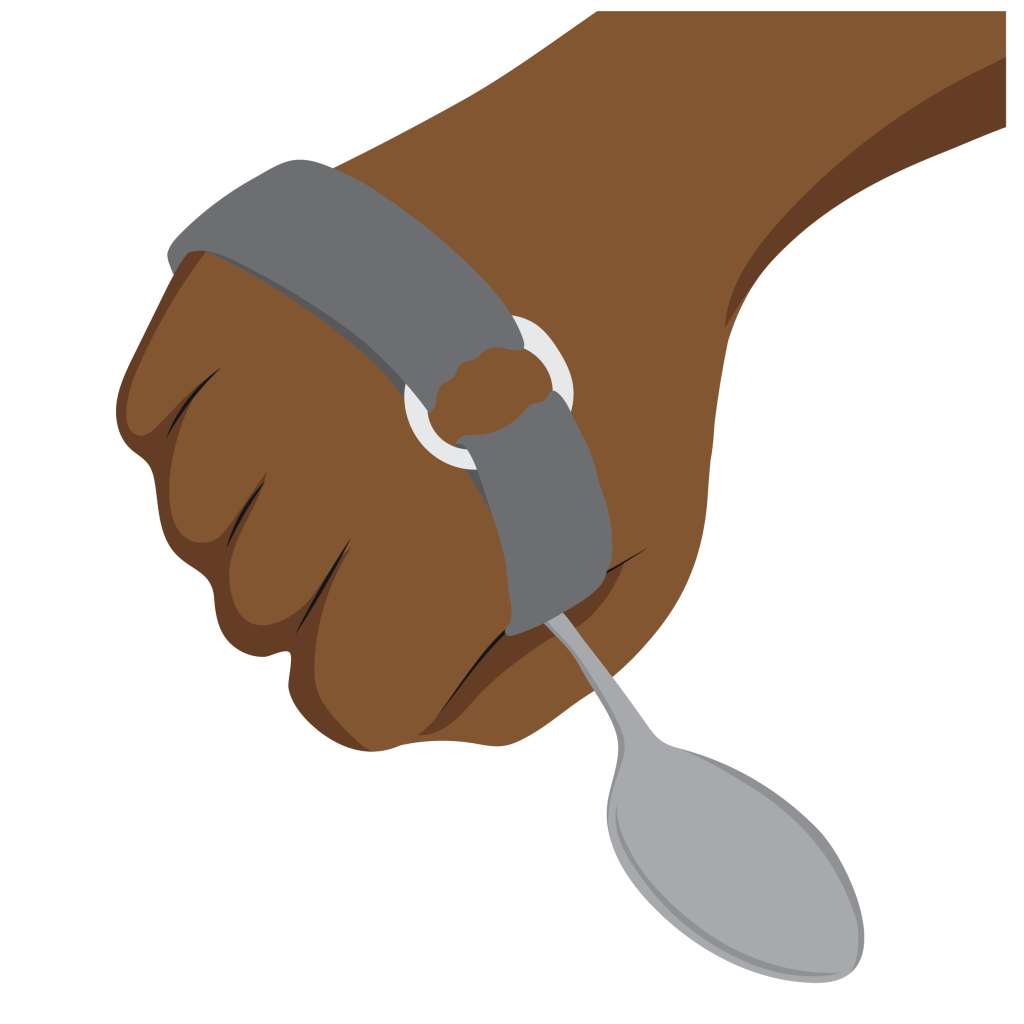
Plate guards and modified plates/bowls
A plate guard is a semi-circular piece of plastic that clips onto the side of a plate.
Modified plates or bowls have ‘inbuilt’ plate guards – one side of the plate or bowl is raised.

Plate guards and modified plates are useful for people who can only use one hand to eat, as they help to pick up food or ‘scoop’ it onto a fork, spoon or other eating utensil.
Modified cups
Modified cups may have handles to make them easier to grip, and/or a lid with a small hole to allow easy drinking without spillage.
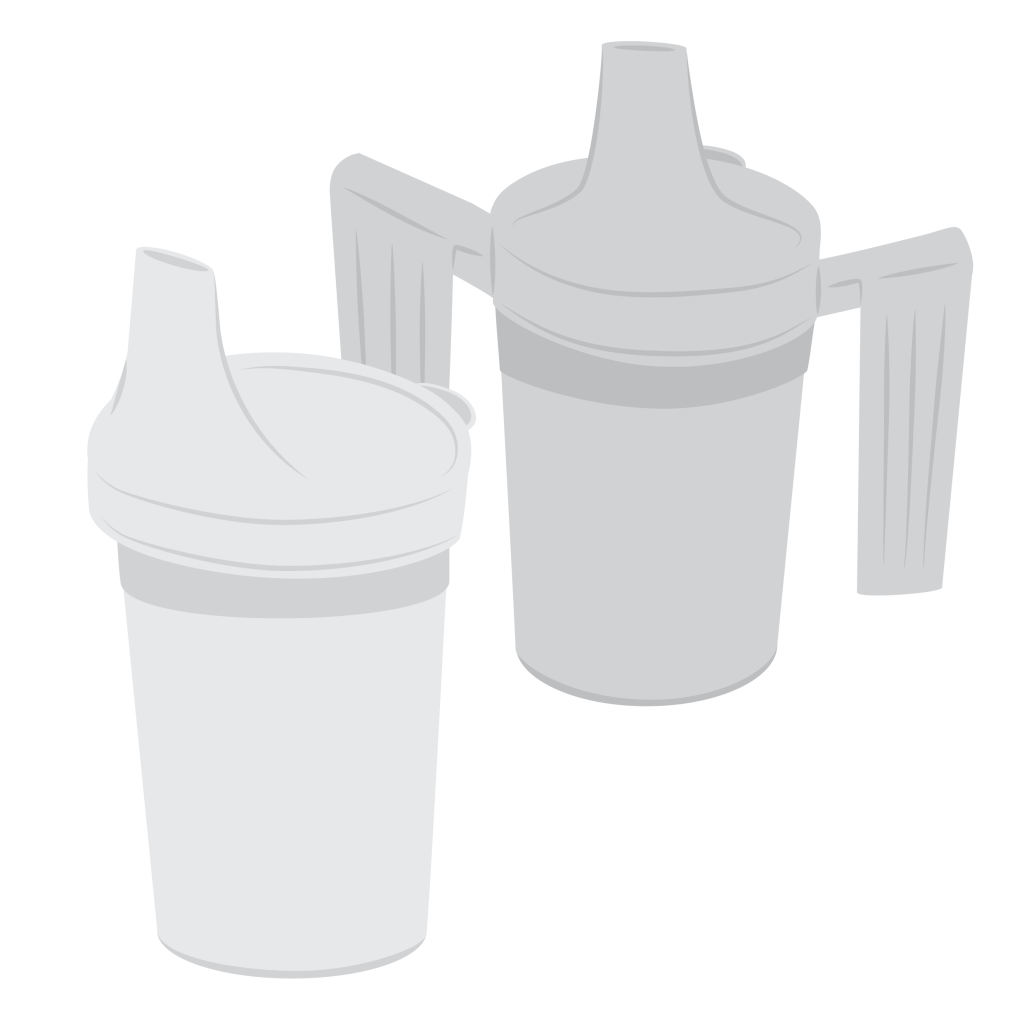
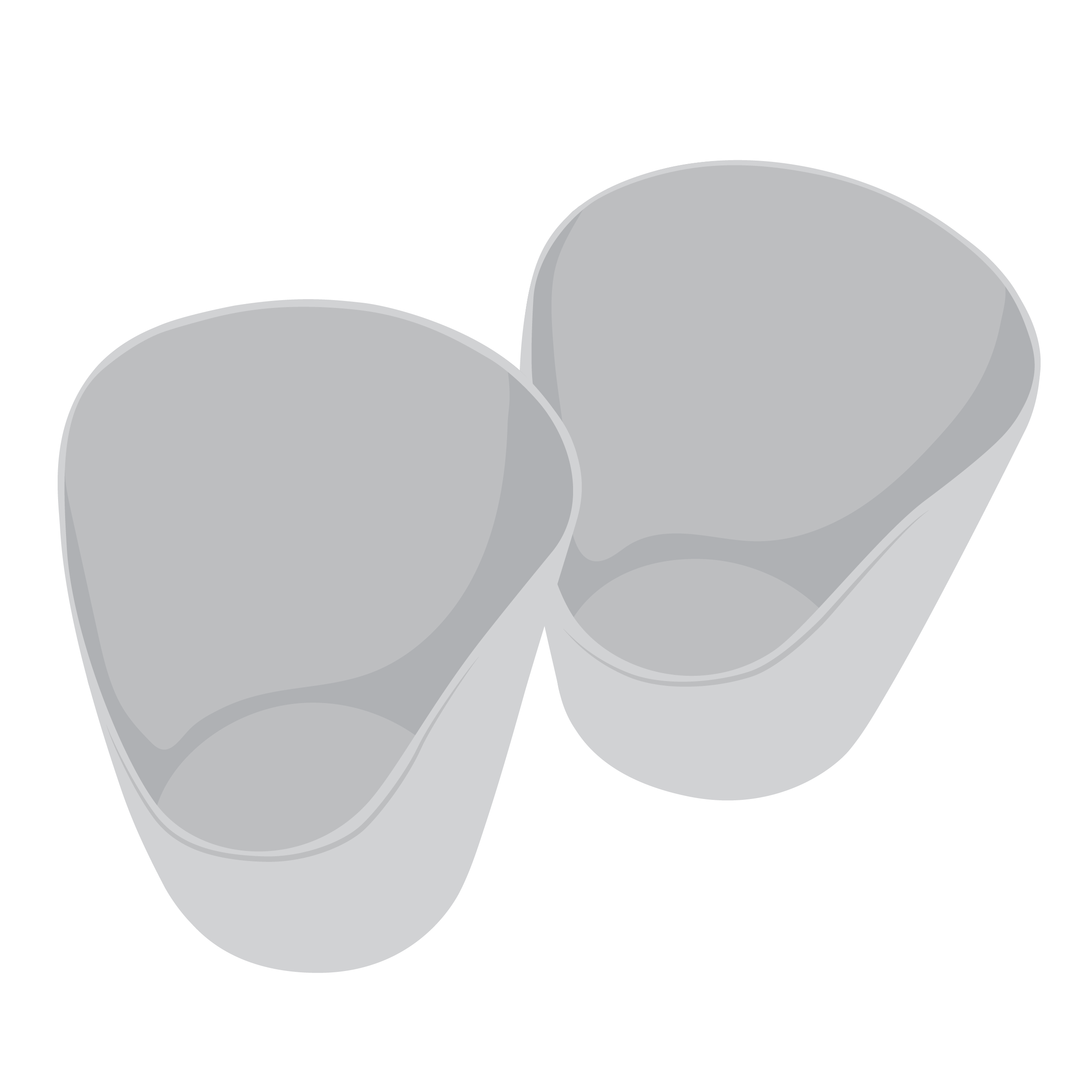
Modified cups can be useful for people with limited hand movement or strength, or poor coordination.
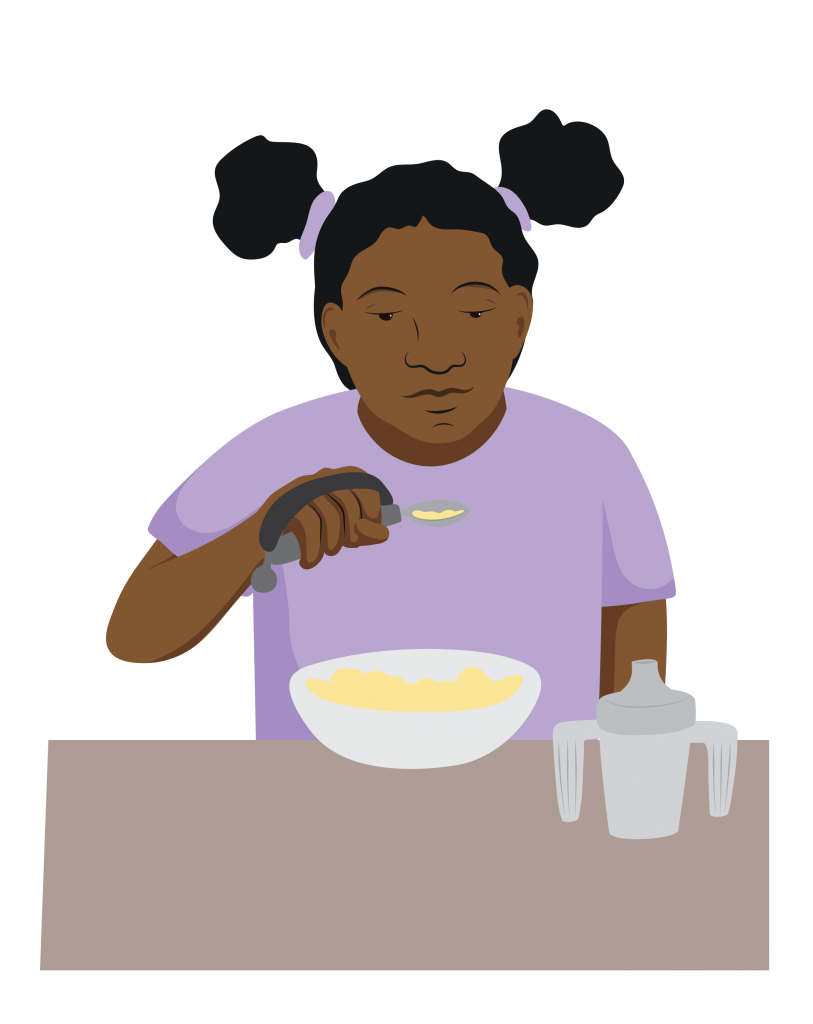
Remember Aleisha?
Aleisha finds it hard to coordinate and control her movements.
She uses a modified cup with two handles and a lid which is easier for her to hold, and prevents spillage.
She also uses a spoon with a thick handle and a loop that helps her to hold onto it.

